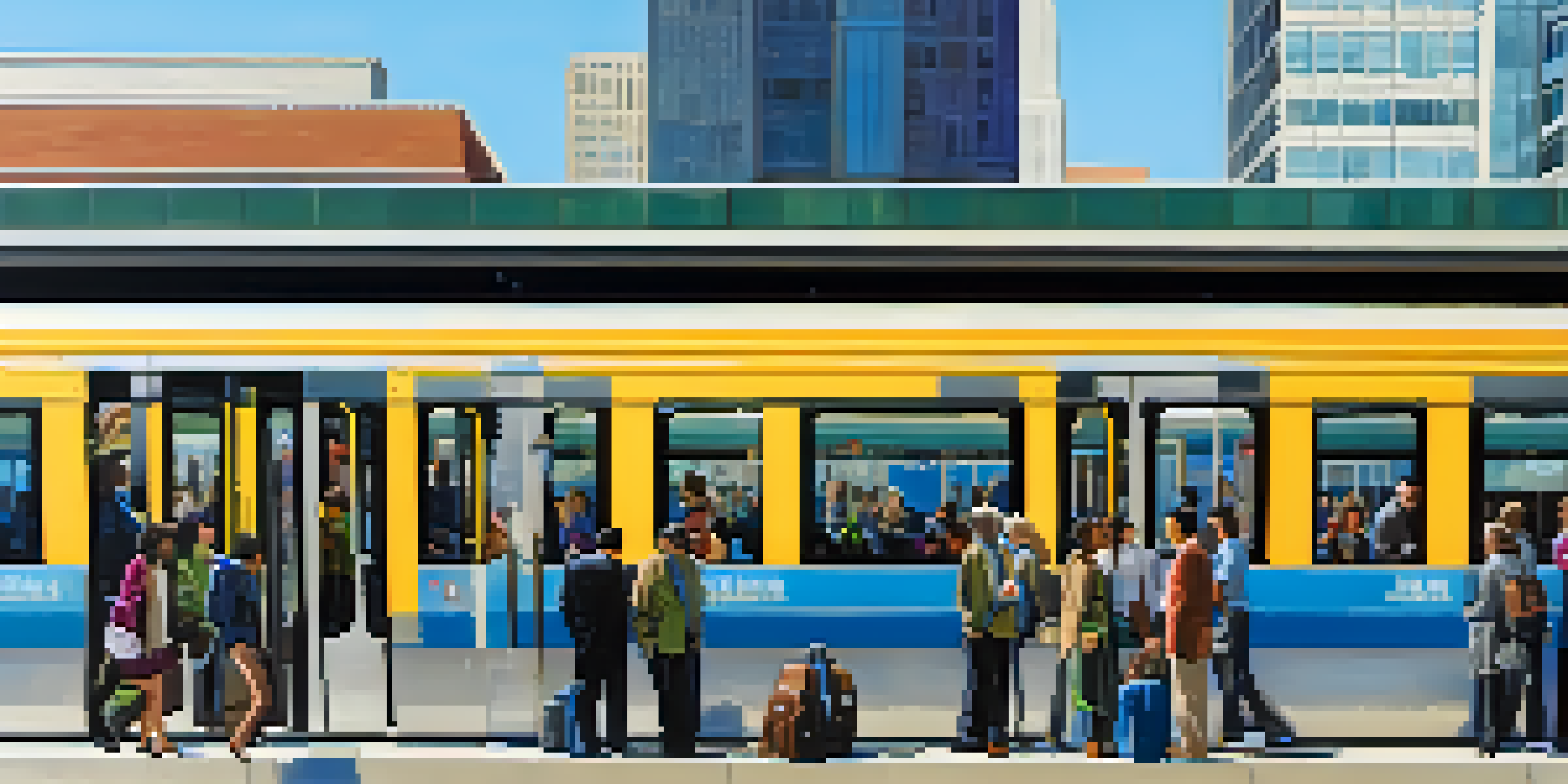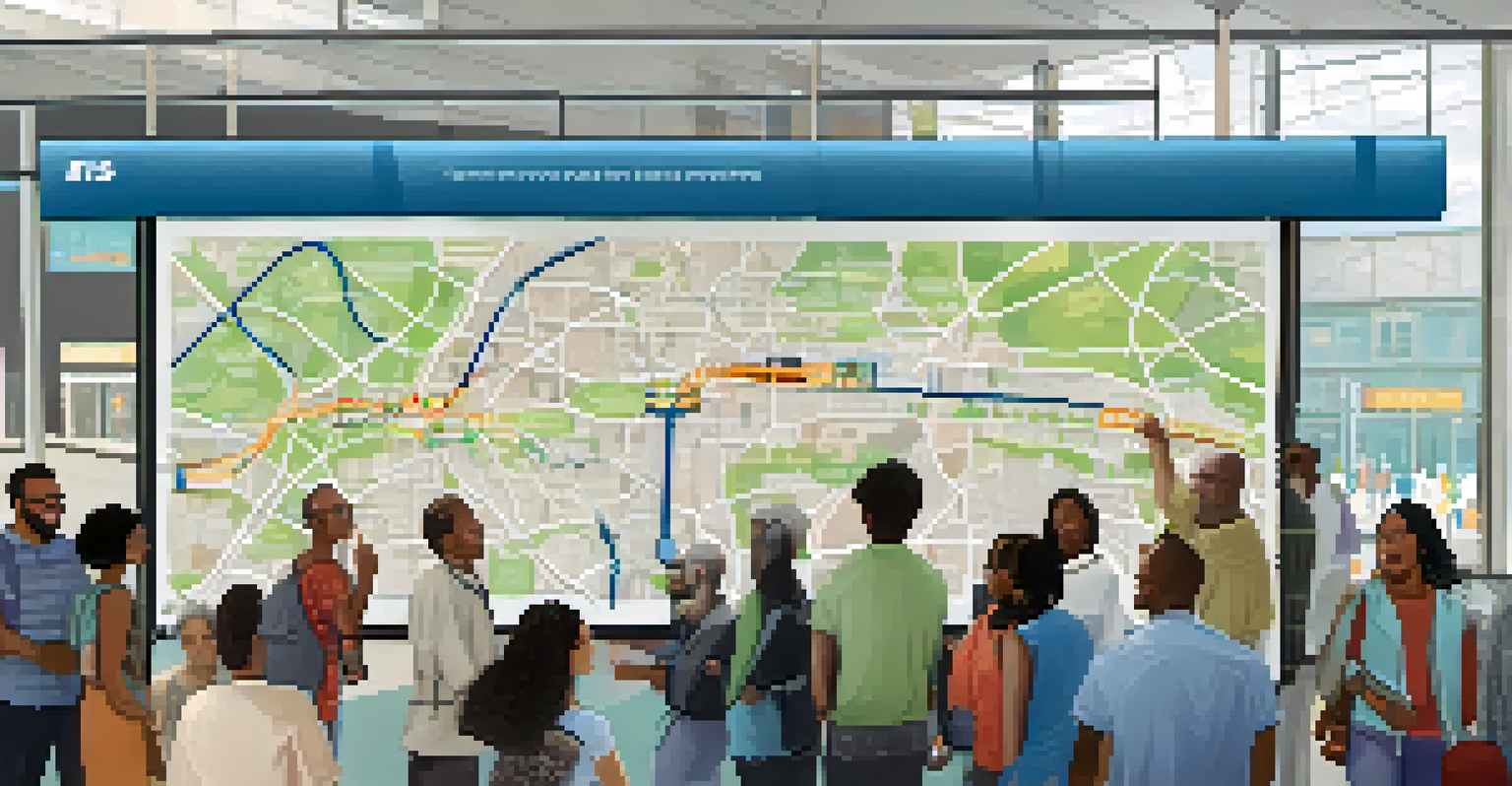The Impact of Public Transportation on Charlotte's Urban Development

Introduction to Charlotte's Public Transportation System
Charlotte's public transportation system, primarily operated by the CATS (Charlotte Area Transit System), plays a crucial role in the city's urban development. It includes the light rail, buses, and other transit options that connect various neighborhoods and business districts. As the city continues to grow, understanding the impact of these transportation options becomes vital for both residents and city planners.
Public transportation is a lifeline for urban residents, providing access to jobs, education, and essential services.
Public transportation not only facilitates commuting but also influences land use, economic growth, and environmental sustainability. For many Charlotteans, it offers a reliable alternative to driving, which can alleviate traffic congestion and reduce greenhouse gas emissions. This shift towards public transit is essential for fostering a more sustainable urban environment.
In this article, we will explore the multifaceted impact of public transportation on Charlotte’s urban development, examining its benefits, challenges, and future directions.
Enhancing Accessibility and Connectivity
One of the most significant impacts of public transportation in Charlotte is its ability to enhance accessibility. With a well-connected system, residents can easily access jobs, schools, and healthcare facilities, regardless of their socioeconomic status. This increased mobility is particularly beneficial for lower-income families who may not own a vehicle.

Moreover, public transit promotes connectivity between different neighborhoods, fostering a sense of community. As residents can travel more easily from one area to another, they are encouraged to explore diverse parts of the city, enriching their cultural experiences. This interconnectedness can also lead to increased local business patronage.
Public Transit Enhances Accessibility
Charlotte's public transportation system improves access to jobs, education, and healthcare for all residents, particularly benefiting lower-income families.
Ultimately, a robust public transportation system serves as the backbone of urban development, ensuring that all citizens have equal opportunities to thrive.
Boosting Economic Growth and Development
Public transportation contributes significantly to economic growth in Charlotte. When areas are served by public transit, they tend to attract businesses and investors, leading to job creation and increased economic activity. For instance, the light rail line has spurred development along its route, transforming previously underutilized areas into vibrant commercial hubs.
A strong public transportation system is essential for sustainable urban development and enhancing the quality of life in cities.
Additionally, public transit can increase property values, making neighborhoods more desirable. This influx of development can lead to enhanced infrastructure, such as parks, shops, and restaurants, further benefiting the local economy. The multiplier effect of transit investments often results in a thriving urban landscape.
In summary, a strong public transportation network is a catalyst for economic development, benefiting both residents and the overall city.
Environmental Benefits of Public Transportation
The environmental impact of public transportation cannot be overstated. By reducing the number of cars on the road, public transit significantly decreases air pollution and greenhouse gas emissions. This is particularly important for urban areas like Charlotte, where air quality can be a concern due to traffic congestion.
Moreover, public transit encourages sustainable urban planning by promoting higher-density developments near transit stations. This approach helps preserve green spaces and reduces urban sprawl, contributing to a healthier environment. The integration of eco-friendly transit options, such as electric buses, further enhances these benefits.
Economic Growth Through Transit
Investment in public transportation leads to increased property values and attracts businesses, driving economic development in Charlotte.
In essence, public transportation plays a vital role in creating a more sustainable future for Charlotte, aligning with broader environmental goals.
Challenges Facing Charlotte's Public Transportation
Despite its benefits, Charlotte's public transportation system faces several challenges. Funding is often a significant hurdle, as maintaining and expanding services requires substantial financial investment. Competition for budget allocations can hinder the growth and improvement of the transit system.
Additionally, public perception plays a crucial role in the system's success. Some residents may view public transit as a less desirable option compared to personal vehicles, leading to lower ridership rates. Overcoming this stigma requires effective marketing and community engagement to highlight the benefits of public transportation.
Addressing these challenges is essential for ensuring that Charlotte’s public transportation system can continue to thrive and support urban development.
Future Directions for Public Transportation in Charlotte
Looking ahead, the future of public transportation in Charlotte hinges on innovation and adaptability. As technology continues to evolve, integrating smart transit solutions such as real-time tracking apps and on-demand services could enhance user experience. Embracing these advancements can make public transit more appealing and efficient.
Additionally, expanding the existing transit network to underserved areas can greatly improve accessibility for all residents. Future projects may focus on creating more light rail lines, bus rapid transit routes, and bike share programs to promote multimodal transportation options.
Sustainability and Environmental Impact
Public transit significantly reduces air pollution and promotes sustainable urban planning, contributing to a healthier environment in Charlotte.
By prioritizing these developments, Charlotte can ensure that its public transportation system meets the needs of a growing population while supporting sustainable urban growth.
Community Involvement and Public Transportation
Community involvement is crucial when it comes to enhancing public transportation in Charlotte. Engaging residents in the planning process can lead to more effective transit solutions that cater to the actual needs of the community. Public forums, surveys, and collaborative workshops can foster dialogue and encourage feedback from diverse stakeholders.
Moreover, building partnerships with local organizations and businesses can strengthen the public transit network. By working together, these entities can promote transit usage, create incentives for public transport, and even support local transit initiatives through sponsorship or programming.

Incorporating community input into public transportation planning ensures that the system remains relevant and beneficial for all residents.
Conclusion: The Future of Urban Development in Charlotte
In conclusion, public transportation plays a pivotal role in shaping Charlotte's urban development. By enhancing accessibility, boosting economic growth, and promoting environmental sustainability, it serves as a cornerstone of the city's future. However, addressing the challenges faced by the transit system and fostering community involvement will be crucial for its continued success.
As Charlotte continues to grow, a strong commitment to developing an efficient and user-friendly public transportation system will be essential. By investing in transit, the city can ensure that it remains a vibrant, connected, and sustainable urban environment for all its residents.
Ultimately, the future of public transportation in Charlotte is bright, with the potential to transform the urban landscape and improve quality of life for years to come.